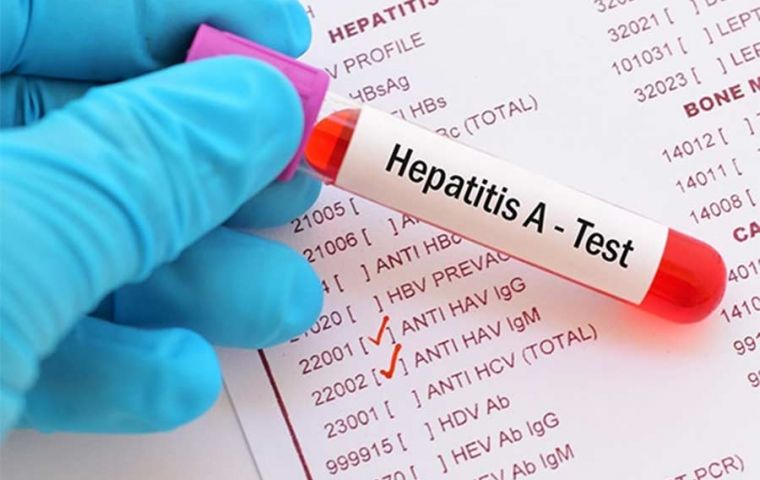MercoPress. South Atlantic News Agency
WHO concerned over hepatitis “of unknown origin” among children
 “Every 30 seconds, one person dies from hepatitis-related causes, such as liver failure, cirrhosis and cancer,” said Tedros
“Every 30 seconds, one person dies from hepatitis-related causes, such as liver failure, cirrhosis and cancer,” said Tedros The World Health Organization (WHO) has expressed its concern over an outbreak of hepatitis “of unknown origin” among children. The agency also reported said it was working “side by side” with authorities in the affected countries to understand the cause of this infection.
WHO specialists also found this type of ailment differed from any of the five known types of hepatitis: A, B, C, D, and E.
In a statement released Thursday marking World Hepatitis Day, the UN body also pointed out that “this new outbreak brings focus on thousands of acute viral hepatitis infections that occur among children, adolescents and adults every year.”
“Most acute hepatitis infections cause mild disease and even go undetected. But in some cases, they can lead [to] complications and be fatal. In 2019 alone, an estimated 78,000 deaths occurred worldwide due to complications of acute hepatitis A to E infections,” it went on.
“For maximum effectiveness, hepatitis surveillance must be delivered at the community level through an effective primary health care system integrated with other health services that address the full range of health needs,” said WHO Director-General Tedros Adhanom Gebreyesus.
Unlike acute viral hepatitis, the C, D, and E forms cause chronic hepatitis lasting for several decades and resulting in more than one million deaths per year from cirrhosis and liver cancer. They also account for more than 95% of hepatitis-related deaths.
“Every 30 seconds, one person dies from hepatitis-related causes, such as liver failure, cirrhosis and cancer,” said Tedros, who recalled that about 80% of people living with the disease do not have access to medical care or cannot afford a suitable treatment.
To eliminate hepatitis by 2030, the UN health agency called on countries to reduce new hepatitis B and C infections by 90%, reduce deaths from cirrhosis and liver cancer by 65%, diagnose at least 90% of hepatitis B and C cases, and treat at least 80% of eligible people.
“Low testing and treatment coverage is the most important gap that needs to be addressed to reach global eradication targets by 2030,″ WHO said, urging governments to increase the use of ”effective“ tools against the disease.
The global agency also launched Friday at the AIDS 2022 Conference in Montreal the new Consolidated guidelines on HIV, viral hepatitis and STI prevention, diagnosis, treatment and care for key populations, which ”outline a public health response to HIV, viral hepatitis and sexually transmitted infections (STIs) for 5 key populations (men who have sex with men, trans and gender diverse people, sex workers, people who inject drugs and people in prisons and other closed settings).“
”Particularly for key populations, social, legal, structural and other contextual factors both increase vulnerability to HIV, viral hepatitis and STIs and obstruct access to health and other essential services,” the WHO noted.




Top Comments
Disclaimer & comment rulesCommenting for this story is now closed.
If you have a Facebook account, become a fan and comment on our Facebook Page!